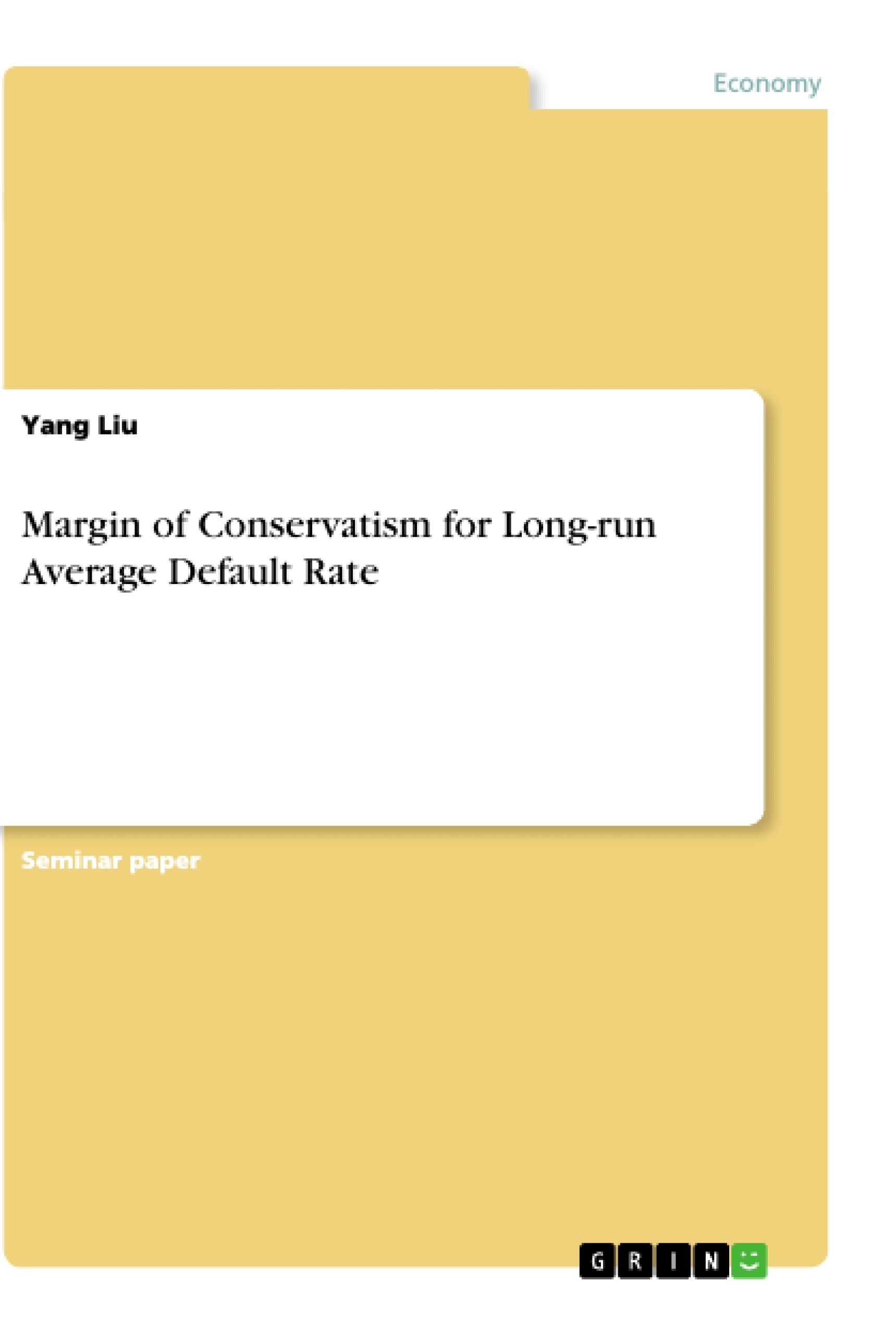Inhaltsverzeichnis (Table of Contents)
- Review of Regulatory Definition
- Math Expression of Regulatory Definition
- Scenarios of MoC - observed, mis-identified defaults
- Uncertainty in D₁ - 1 year
- Uncertainty in D₂ - multiple years
- Scenarios of MoC - unobserved, defaults
- Uncertainty in D₂ and N₁ - 1 year
- Uncertainty in D₁ - multiple years
- Scenarios of MoC - general case
Zielsetzung und Themenschwerpunkte (Objectives and Key Themes)
This paper aims to quantify and measure the Margin of Conservatism (MoC) for the long-run average default rate, specifically focusing on regulatory identified deficiency categories A, B, and D. The approach presented does not rely on predefined distributions, tail properties, or confidence intervals, but rather utilizes the relative uncertainty in empirically identified data and system issues. This study provides a generalized mathematical definition of the MoC adjustment, extending it to encompass judgmental uncertainties and allowing quantification of issues relative to the observed data in default rate calculations.
- Quantifying and measuring the Margin of Conservatism (MoC) for long-run average default rate
- Analyzing regulatory identified deficiency categories A, B, and D
- Developing an approach based on relative uncertainty in empirically identified data and system issues
- Providing a generalized mathematical definition of the MoC adjustment
- Encompassing judgmental uncertainties and quantifying issues relative to observed data
Zusammenfassung der Kapitel (Chapter Summaries)
- Review of Regulatory Definition: This chapter outlines the regulatory definition of deficiencies and their classification into categories A, B, C, and D. It emphasizes the focus of this paper on categories A, B, and D, which are related to data and observations. It also highlights the importance of correcting estimation errors in PD and LGD estimates stemming from these deficiencies.
- Math Expression of Regulatory Definition: This chapter provides mathematical expressions for the one-year and long-run average default rates, based on regulatory definitions. It defines the terms and variables used in the calculations.
- Scenarios of MoC - observed, mis-identified defaults: This chapter explores scenarios where defaults are observed but may be misidentified due to data quality issues or other uncertainties. It defines the Margin of Conservatism for the one-year and long-run average default rates and presents equations to adjust for these uncertainties.
- Scenarios of MoC - unobserved, defaults: This chapter considers scenarios where defaults are not observed but are potentially present due to data quality issues. It outlines the adjustments needed to account for these unobserved defaults and provides equations for the Margin of Conservatism.
- Scenarios of MoC - general case: This chapter generalizes the previous scenarios, combining the concepts of observed, mis-identified, and unobserved defaults. It presents a proposition defining the relative uncertainties in defaults and observations and derives the Margin of Conservatism for the long-run average default rate.
Schlüsselwörter (Keywords)
This paper focuses on the Margin of Conservatism (MoC) for the long-run average default rate, taking into account regulatory identified deficiencies in categories A, B, and D. The key concepts include the relative uncertainty in empirically identified data and system issues, judgmental uncertainties, and a generalized mathematical definition of the MoC adjustment. It explores scenarios of observed and unobserved defaults, adjusting calculations for data quality issues and potential misidentification. The study contributes to the understanding and quantification of risk in financial modeling, particularly in relation to default rates.
- Quote paper
- Yang Liu (Author), 2018, Margin of Conservatism for Long-run Average Default Rate, Munich, GRIN Verlag, https://www.grin.com/document/443862




